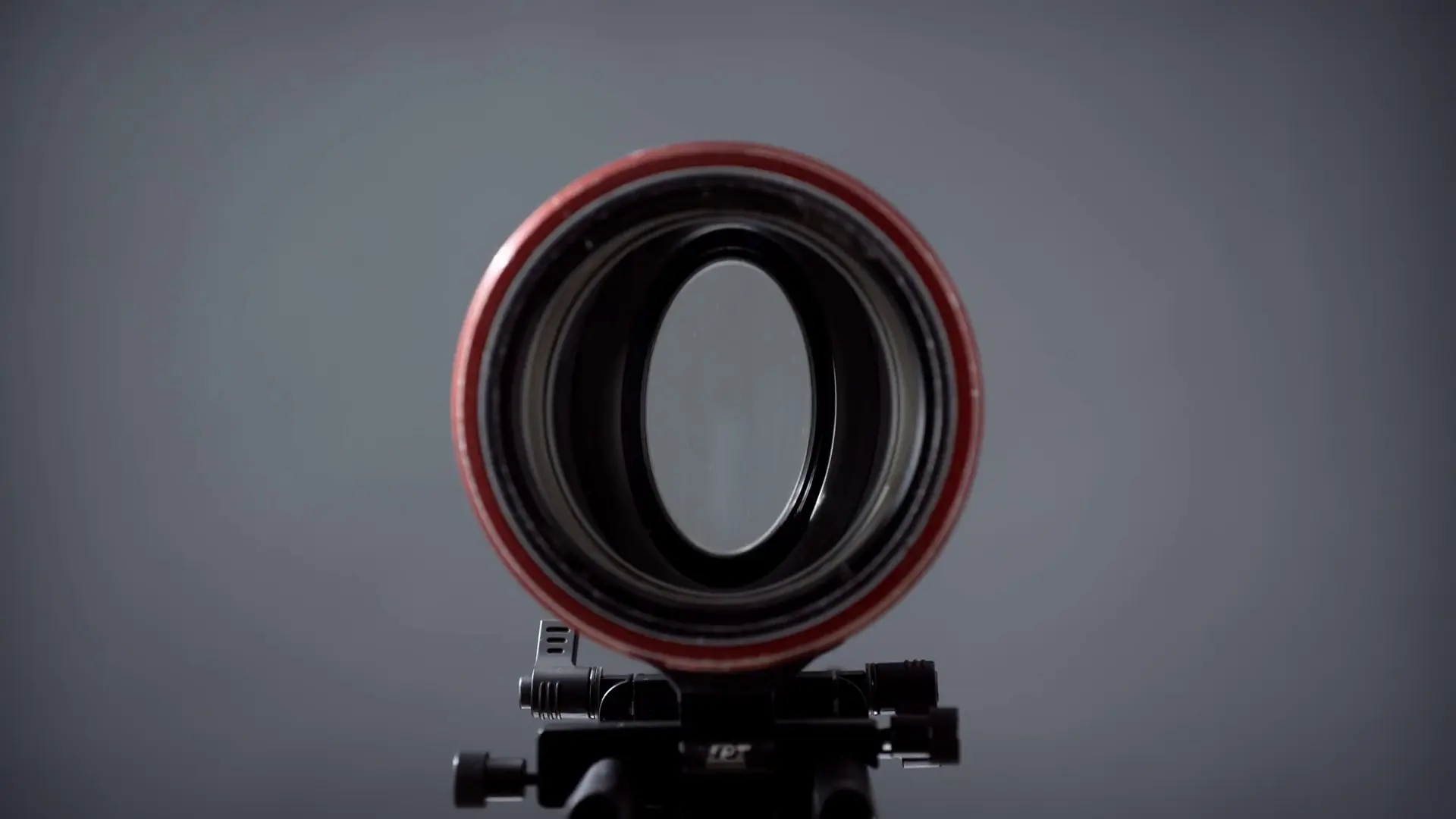What does tank-warfare and the aspect ratio of movies have in common? Anamorphic lenses! These technological marvels are legendary in the world of cinematography. Over the past 100 years, Hollywood has constantly experimented with various innovations, seeking not just to push creativity but to increase profit. A brief journey through history will help us appreciate the anamorphic format and its unlikely invention and popularity. And if you’re a filmmaker looking to get that “anamorphic lens look,” we’ll go over all the visual characteristics that will get the job done.
WHAT IS an anamorphic lens?
Anamorphic lens definition
We take them for granted now, but there was a time when technologies like synchronized sound, 3D, or even widescreen were experiments! Before we look into the characteristics of anamorphic lenses we must first answer, “What is an anamorphic lens?”
anamorphic lens DEFINITION
What is an anamorphic lens?
An anamorphic lens is designed with additional glass elements that squeeze the image horizontally, allowing filmmakers to capture a wider field of view than the film or digital sensor would ordinarily allow.
In production there are typically two classes of lenses — anamorphic and spherical. Spherical lenses are the most common and project images onto a camera's film or digital sensor without affecting their aspect ratio.
WHAT IS anamorphic lens?
The rise of widescreen
By the 1900s the international filmmaking community had standardized on 35mm film and cameras that produced an image with an aspect ratio of approximately 1.33:1 (the shape of old televisions).
For example, the Wizard of Oz was shot in 1.37:1.

Movies before the anamorphic aspect ratio
But change was on the horizon. As early as the 1920s filmmakers began experimenting with widescreen.
ASPECT RATIO DEFINITION
What is an aspect ratio?
In movie-making, aspect ratio describes the size of the frame (i.e., is it square, rectangular, or super wide). Historically, different technologies have used different aspect ratios.
For example:
- 1.375:1 ‘Academy’ — Most movies during the '30s and '40s
- 2.39:1 ‘Cinemascope’ — Traditional widescreen movies
- 1.78:1 ‘HDTV’ — Modern television
- 1:1 ‘Square’ — As used on Instagram
The numbers are a mathematical ratio between the width and height of the frame.
Chopping off the top and bottom of the frame (adding black bars) to produce a wider image was not a viable solution. The resulting image lacked resolution and brightness when projected.
Some studios experimented with using wider film — the Fox Grandeur format used 70mm wide film. Some were even more innovative! Cinerama bolted three 35mm cameras together to produce an ultra wide panoramic image.
In specially equipped cinemas, three synchronized projectors stitched the image back together on a seamless arced screen.

Cinerama • Before Anamorphic Widescreen
Such formats were technical triumphs but required expensive specialized equipment, not only to shoot but also to exhibit. Movie theaters and studios could not justify the expense. A more economical solution was needed if widescreen was ever to be a success.
MOVIES GO WIDE
Introducing the anamorphic camera lens
Enter the anamorphic lens. Like a circus funhouse mirror, an anamorphic lens stretches an image in one direction.

The Anamorphic Camera Lens
Because of their stretch, anamorphic lenses appear oval when you look through them. Trust me though…they are round inside, it’s just an optical illusion.

Anamorphic Lens • Credit Nicholas Moldenhauer Media Division
The technology was originally developed in France during World War I by Henri Chrétien to provide a wider field-of-view for the crews of military tanks. In the early '50s, 20th Century Fox recognized their potential for movie-making and purchased the rights.
By putting an anamorphic lens in front of the camera, a wider image could be squeezed onto standard 35mm. To project widescreen, a cinema simply needed to install a wider screen and put an anamorphic lens in front of their projector to de-squeeze the image. Genius!
By retrofitting existing equipment rather than requiring studios and cinemas to buy new equipment, Fox gave widescreen the push it needed to finally become widely adopted. They called their invention Cinemascope.

Cinemascope Opening Credits Logo
In the years that followed other studios developed competing systems for producing widescreen images. Many of these used spherical lenses. But while Cinemascope was originally created as a technical work-around, thanks to its unique aesthetic it has become an enduring tool in the cinematographer’s arsenal. These characteristics can be used to support the story of a film, or simply induce nostalgia thanks to their association with classic or epic films.

Widescreen Movie Still
In the years that followed other studios developed competing systems for producing widescreen images. Many of these used spherical lenses. But while Cinemascope was originally created as a technical work-around, thanks to its unique aesthetic it has become an enduring tool in the cinematographer’s arsenal. These characteristics can be used to support the story of a film, or simply induce nostalgia thanks to their association with classic or epic films.
Before we dive into the unique visual characteristics of anamorphic lenses, make sure to download our FREE Ebook: The Ultimate Guide to Camera Lenses so you'll be able to decide which lenses best fit your next project.
Free downloadable bonus
FREE Download
Camera Lenses Explained
Every type of camera lens has distinct qualities and visual characteristics that every image-maker should understand. Download our FREE e-book to get in-depth explanations on prime vs. zoom lenses, anamorphic vs. spherical lenses, wide angle, standard, telephoto and even specialty lenses that all tell a slightly different story.
Anamorphic types
Different types of anamorphic lenses
There are many different types of anamorphic lenses commonly called ‘Scopes,’ each with a different strength squeeze. The stronger the squeeze the more pronounced the ‘anamorphic look’ becomes.
Nowadays, cinematographers typically choose the squeeze factor based on the aesthetic of the image it produces. But in the past different squeeze factors were used to produce different aspect ratios when combined with different sized film or digital sensors.
For example, the most common type of anamorphic lens is a 2x, which was originally designed to produce a 2.39:1 (or similar) aspect ratio image when used with 4-perf 35mm film. 1.33x squeeze lenses were designed to produce the same aspect ratio with a 1.78:1 (16:9) digital sensor.
These practical considerations are no longer relevant as modern digital cameras are capable of emulating different capture formats.
As with all lenses, anamorphic lens designs have improved greatly over the past 80 years. Vintage anamorphic lenses have lots of imperfections but some modern anamorphics are almost indistinguishable from their spherical counterparts. A wide variety of looks can be achieved with anamorphic lenses.
If you’d like to learn more about the optical design and aesthetics of anamorphic lenses, check out this incredible video by Media Division:
Anamorphic Lenses in Cinema with Theory
anamorphic lens examples
The anamorphic look
Images shot with anamorphic lenses typically have a unique appearance. Depending on a lens’s construction it will exhibit the following characteristics to varying degrees:
BOKEH
As a result of squeezing the image horizontally, out of focus areas of an anamorphic image stretch vertically. This gives anamorphic images their trademark oval bokeh.
The stronger a lens’s squeeze, the stronger the oval effect.



Anamorphic Lens Bokeh Example • Heat
DEPTH OF FIELD
Anamorphic optics blur the background more than equivalent spherical lenses. Some anamorphics disproportionately magnify objects closer to the camera. As a result they have a perceivably shallower depth of field.
This can help subjects stand out against their background. The stronger a lens’s squeeze, the stronger this effect.



Anamorphic Lens Depth of Field Example • Hobbs and Shaw
LENS FLARE
Early anamorphic lenses had a tendency to flare when hit with a bright light. Thanks to the anamorphic elements these lens flares would streak horizontally across the frame.
While modern lens coatings can eliminate anamorphic flares, many manufactures choose to use coatings that encourage flares. Different coatings produce different colored flares.



Anamorphic Lens Flare Example • Batman Begins
FALL OFF
Both anamorphic and spherical lenses suffer from a fall off in sharpness as you move away from the center of the frame. This effect is more pronounced on an anamorphic lens, especially on vintage lenses. Some cinematographers use this flaw to help them produce softer and more organic images.



Anamorphic Lens Fall Off Example • La La Land
FOCUS ROLL OFF
Anamorphic lenses have a more ‘organic’ transition between in-focus and out-of-focus elements, otherwise known as focus roll off. Many cinematographers prize this characteristic as it can help integrate subjects with their background in a perceivably more realistic manner.



Anamorphic Lens Focus Roll Off Example • Star Wars: The Force Awakens
DISTORTION
Vintage wide anamorphic lenses can suffer from distortion as you move towards the edge of the frame. It should be noted however that many spherical lenses distort at their edges too. Older anamorphics suffered from ‘scope mumps’ where faces or other objects would deform when close to the camera.



Anamorphic Lens Distortion Example • Heat
FOCUS BREATHING
Many lenses (including spherical) zoom slightly as you rack focus. This is called focus breathing. Expensive cine lenses are designed not to breathe when focusing. There are four distinctly different optical mechanical designs that anamorphic lenses use to focus.
Therefore different anamorphic lenses breathe differently. For example:
- On synchro-focus lenses the squeeze power changes as the lens focuses.
- Panavision anamorphics use a unique focusing method that causes the background to ‘breathe’ vertically as they focus.
Focus Breathing Explained
Anamorphic Lenses Today
Cinemascope's legacy
Like clothing trends, anamorphic has fallen in and out of fashion.
Cinemascope enjoyed a boom in the early '50s but its use quickly declined in favor of technically superior spherical ‘flat’ widescreen formats. In the late '60s, Panavision released their C-series of anamorphic lenses.
Thanks to Panavision's improved designs anamorphics once again dominated in the '70s and '80s forever associating the anamorphic aesthetic and ‘scope’ aspect ratio with high budget epic movies.
In recent years, anamorphic lenses have once again become popular. Shooting on film inherently adds character and interest to an image but digital offers a more clinical and clean look. As more and more productions use digital cameras many cinematographers gravitate towards vintage lenses, both spherical and anamorphic to add imperfection back to their digital image.
The wide aspect ratios that are typically used when shooting anamorphic require different composition, blocking and even editing when compared to narrower aspect ratios. Check out this video that deals with how wider frames have influenced the way movies are made:
Aspect Ratio • The Changing Shape of Cinema
Anamorphic vs SPherical
Should you shoot anamorphic?
Every decision you make as a filmmaker should be driven by the story. Will shooting anamorphic support your film’s story, or will it distract from it? It’s important to prioritize substance over style. New or novel techniques or tools can often distract filmmakers from what is most important.
Many filmmakers have successfully used anamorphic lenses to enhance their storytelling. For example, in La La Land, director Damien Chazelle used original Cinemascope lenses from the '50s to elicit the nostalgic feel of musicals from that decade.



Cinemascope Example • La La Land
Grieg Fraser the cinematographer on Killing Them Softly chose specially modified anamorphic lenses to give his images a soft creamy look and because of the incredible separation is allows between the subject and background.



Anamorphic Lens Example • Killing Them Softly
Cinematographer Matthew Libatique shot A Star is Born using a selection of different anamorphic lenses. In particular he reserved the use of more imperfect vintage anamorphics for certain scenes featuring Bradley Cooper’s character. This allowed the filmmaker to show when other character’s were entering his world.



Anamorphic Lens Example • A Star is Born
Cinematographer Mihai Mălaimare Jr. chose 1.33x squeeze anamorphic lenses for Jojo Rabbit because they helped establish a period look on a 1.85:1 frame without the excessive cropping that would have been required if using 2x squeeze anamorphic lenses.



Anamorphic Lens Example • JoJo Rabbit
The Anamorphic Lens Look
How to shoot anamorphic
Professional anamorphic lenses are expensive. Like ‘should I put a deposit on a house or buy a lens’ expensive! You can spend up to $60,000 on a single Arri Master Anamorphic lens. A more budget-friendly lens from Atlas Lens Co. will set you back a mere $10,000 per lens.
Recently companies like Sirui have started producing anamorphic lenses as cheap as $700. Phew, that’s better! But before you pull the trigger, you should know that while these lenses are amazing value, the manufacturer has had to make compromises in the lens’s design to hit that incredible price point. Sirui’s lenses might not give you the visual characteristics you are after.



Anamorphic Lenses from Sirui
Another popular option is to build your own anamorphic lens. How? In the past two decades, most cinemas have converted from film projection to digital projection. This has flooded the second hand market with anamorphic projection lenses. These work exactly the same way as camera lenses.
With some modification you can add the appropriate lens mount, a focusing solution and make your own ‘scope’ lens for a fraction of the cost of a professional cine lens. If you are interested in building your own anamorphic lens, there are some great resources online.
Free downloadable bonus
FREE Download
Camera Lenses Explained
Every type of camera lens has distinct qualities and visual characteristics that every image-maker should understand. Download our FREE e-book to get in-depth explanations on prime vs. zoom lenses, anamorphic vs. spherical lenses, wide angle, standard, telephoto and even specialty lenses that all tell a slightly different story.
UP NEXT
Different types of camera lenses
Once upon a time, anamorphic was the only way of achieving a wide aspect ratio. Now it’s possible to shoot wide with spherical or anamorphic lenses. Anamorphic is now an aesthetic choice. Will the anamorphic aesthetic help you tell your story? That’s for you to decide. But if it does, there are more options than ever to get that unique look for your next project.
Up Next: Types of lenses →
Showcase your vision with elegant shot lists and storyboards.
Create robust and customizable shot lists. Upload images to make storyboards and slideshows.


